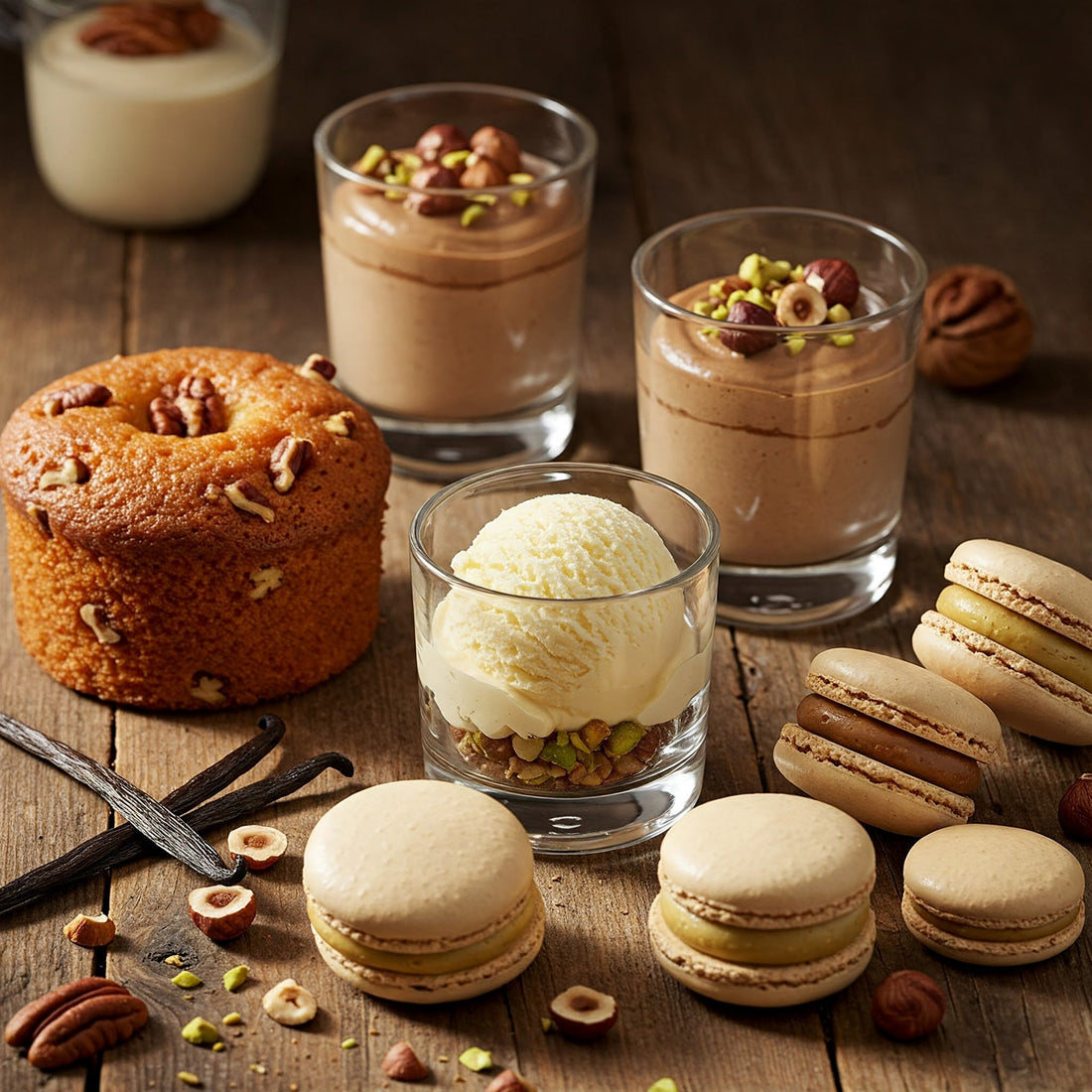
The Science of Mixing: How It Affects Vanilla’s Flavor
Share
Introduction: My Journey into Baking & Vanilla
Have you ever wondered why the same vanilla cake recipe can taste different depending on who bakes it? I have never been one to bake or even step into the world of pastries. But something about watching baking videos captivated me, the precision, the artistry, and the science behind every whisk, fold, and mix.
As I observed professional and home bakers perfecting cakes, pastries, and ice creams, one question kept coming to mind: Where does vanilla come in, and how does mixing affect its flavor? The secret often lies in the mixing method. Each mixing method affects how these compounds are released, infused, or even muted in your final bake. Whether you’re creaming, reverse creaming, or folding, the way ingredients come together significantly impacts vanilla’s aroma, depth, and overall flavor in baked goods.
Vanilla being one of the most cherished ingredients in baking, a few realize how different mixing techniques impact its taste. Vanilla is more than just a flavoring, it’s a delicate balance of aromatic compounds that interact with fats, sugars, and heat. In this article, we'll explore three primary mixing methods; creaming, reverse creaming, and folding and how they influence vanilla’s flavor profile.
Understanding these techniques can help you unlock the full potential of vanilla in your cakes, cookies, and pastries. In this blog post, we’ll break down how different mixing methods influence vanilla’s taste and texture, explore the science behind each technique, and share expert tips to help you bake with precision. By the end, you’ll not only know how to mix but why it matters so you can create consistently flavorful, bakery-quality treats every time.
Why Vanilla is More Than Just a Flavor
Before diving into mixing techniques, let's establish why vanilla is such a crucial ingredient in baking:
· Enhances Overall Sweetness: Vanilla adds depth to baked goods, making them taste sweeter and richer.
· Provides Aromatic Complexity: Its flavor profile ranges from floral and sweet to warm and woody, depending on the variety and processing.
· Reacts with Heat and Fat: Vanilla compounds change under heat, and fat helps carry its flavor throughout a recipe.
Now, let’s break down the science behind how mixing affects vanilla’s taste.
The Science of Mixing: How Techniques Shape Vanilla’s Flavor
Mixing is more than just blending ingredients together, it affects the structure, texture, and flavor dispersion of vanilla. Here’s how different methods influence its taste:
1. Creaming Method: Enhancing Vanilla’s Aromatic Profile
The creaming method involves beating butter and sugar together until light and fluffy before adding liquids and dry ingredients. This method incorporates air, resulting in a tender, well-aerated crumb.
How It Affects Vanilla’s Flavor:
✅ Traps air, which helps distribute vanilla flavor more evenly.
✅ The fat in butter carries and amplifies vanilla’s aromatic compounds.
✅ Produces a rich, pronounced vanilla presence in cakes and cookies.
Best for:
✔️ Cakes (butter cakes, vanilla pound cake)
✔️ Cookies (sugar cookies, shortbread)
✔️ Muffins & Cupcakes
2. Reverse Creaming: A More Subtle Vanilla Experience
In the reverse creaming method, dry ingredients are mixed with butter first before adding the liquid ingredients. This results in a finer crumb and denser texture.
How It Affects Vanilla’s Flavor:
✅ Less aeration means vanilla’s aroma is mild and evenly spread.
✅ Produces a more subtle, buttery vanilla taste rather than an intense burst of flavor.
✅ Works well in baked goods where texture matters more than airiness.
Best for:
✔️ Pound cakes
✔️ Shortbread cookies
✔️ Dense pastries
3. Folding Method: Preserving Vanilla’s Pure Essence
The folding method involves gently incorporating ingredients (like whipped egg whites or flour) to maintain airiness and structure.
How It Affects Vanilla’s Flavor:
✅ Since there’s no excessive agitation, vanilla’s delicate floral and sweet notes stay intact.
✅ Works best for light and airy baked goods that don’t overpower vanilla’s natural essence.
✅ Ideal for showcasing high-quality vanilla beans without excessive heat exposure.
Best for:
✔️ Soufflés
✔️ Meringues
✔️ Sponge cakes
Choosing the Right Vanilla for Different Mixing Methods
Not all vanilla products behave the same way. Depending on the mixing method, one type may work better than another. Here’s a breakdown:
1. Vanilla Extract (Best for Creaming & Reverse Creaming)
✔️Easily blends into butter and sugar.
✔️ Works well in cakes, cookies, and pastries.
2. Vanilla Bean Paste (Great for All Mixing Methods)
✔️ Delivers intense flavor with visible vanilla flecks.
✔️ Ideal for cakes, custards, and buttercreams.
3. Vanilla Powder (Best for Reverse Creaming)
✔️ Mixes well with dry ingredients.
✔️ Great for pound cakes and shortbread cookies.
4. Whole Vanilla Beans (Best for Folding)
✔️ Perfect for delicate bakes like soufflés and meringues.
✔️ Adds a natural, floral essence without excessive heat exposure.
Pro Tips for Maximizing Vanilla Flavor in Any Mixing Method
Regardless of the method you choose, these tips will ensure optimal vanilla flavor in your baked goods:
1. Timing Matters
· For intense vanilla flavor, add extract after creaming rather than with dry ingredients.
· For delicate desserts, infuse whole beans into wet ingredients before mixing.
2. Use High-Quality Vanilla
· Choose pure vanilla extract over artificial alternatives for depth and complexity.
· Opt for Madagascar vanilla for a creamy, sweet taste or Tahitian vanilla for a floral, fruity aroma.
3. Temperature Control
· Avoid overheating vanilla extract, as high temperatures can degrade its flavor compounds.
· Use room-temperature ingredients for even mixing and better flavor dispersion.
4. Pair Vanilla with Complementary Ingredients
· Fat-rich ingredients like butter, cream, and egg yolks enhance vanilla’s depth.
· Spices like cinnamon, nutmeg, and cardamom elevate vanilla’s natural sweetness.
Conclusion
Mixing methods play a crucial role in how vanilla’s flavor develops in baked goods. Creaming enhances richness, reverse creaming creates a tender crumb, and folding preserves delicate flavors. By understanding these techniques, you can control how vanilla interacts with your ingredients, leading to more flavorful, balanced bakes. For more expert tips and recipes, follow us for vanilla-related content! Visit our recipe pages and blog for more educational insights.
What’s your preferred method? Try experimenting and discover which technique brings out your favorite vanilla taste. Let us know in the comments, how do you mix vanilla in your baking?
